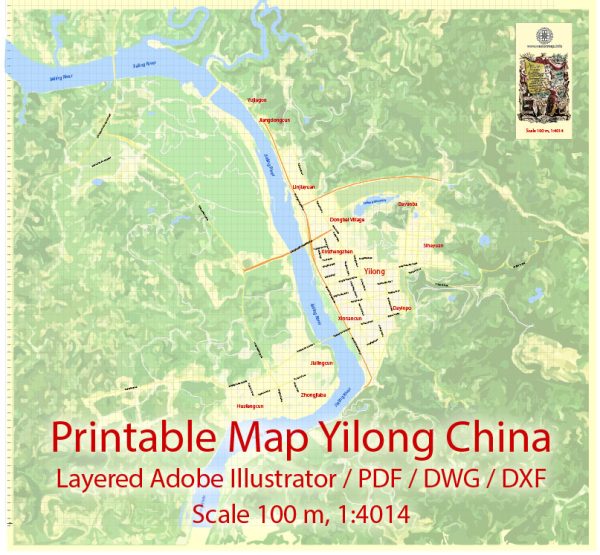Yilong County is located in the Sichuan Province of China and, like many rural areas in China, it features a mix of traditional and modern architectural styles. Here’s a general description of the architecture you might find in Yilong:
- Traditional Chinese Architecture: Yilong County, being a part of China, likely contains traditional Chinese architectural elements. Traditional Chinese architecture is characterized by wooden structures, intricate roof designs, and decorative motifs. Traditional buildings often feature upturned eaves, ornate tiles, and red or green color schemes. Courtyards and gardens are also common in Chinese architecture.
- Vernacular Architecture: In rural areas like Yilong, you’ll find vernacular architecture that is often designed to meet the specific needs of the local community. These buildings are constructed using locally available materials and techniques. Traditional rural homes in Yilong may include earthen buildings, wooden houses, and structures designed for farming and rural living.
- Modern Construction: As China has experienced rapid urbanization, modern architecture has become prevalent in many areas, including rural regions. You’ll find modern buildings, infrastructure, and housing developments in Yilong County, reflecting contemporary architectural styles and materials.
- Religious and Cultural Sites: Yilong may have temples, shrines, or other religious and cultural structures. These could range from traditional Buddhist or Taoist temples to more recent religious buildings, each with its own unique architectural features and designs.
- Natural Attractions: Yilong County is known for its natural beauty, and architectural developments may be designed to complement or provide access to these attractions. For example, there might be architectural features like bridges, paths, and viewing platforms in scenic areas.
- Infrastructure: Like other regions in China, Yilong would have infrastructure like roads, bridges, schools, and administrative buildings. These structures are typically constructed using modern architectural styles and materials.
It’s important to note that the architectural landscape of Yilong County, as with many places, may be evolving and changing with time due to economic development and urbanization. If you have specific architectural sites or structures in mind, it’s advisable to check recent sources or local authorities for the most up-to-date information and descriptions.


 Author: Kirill Shrayber, Ph.D.
Author: Kirill Shrayber, Ph.D.